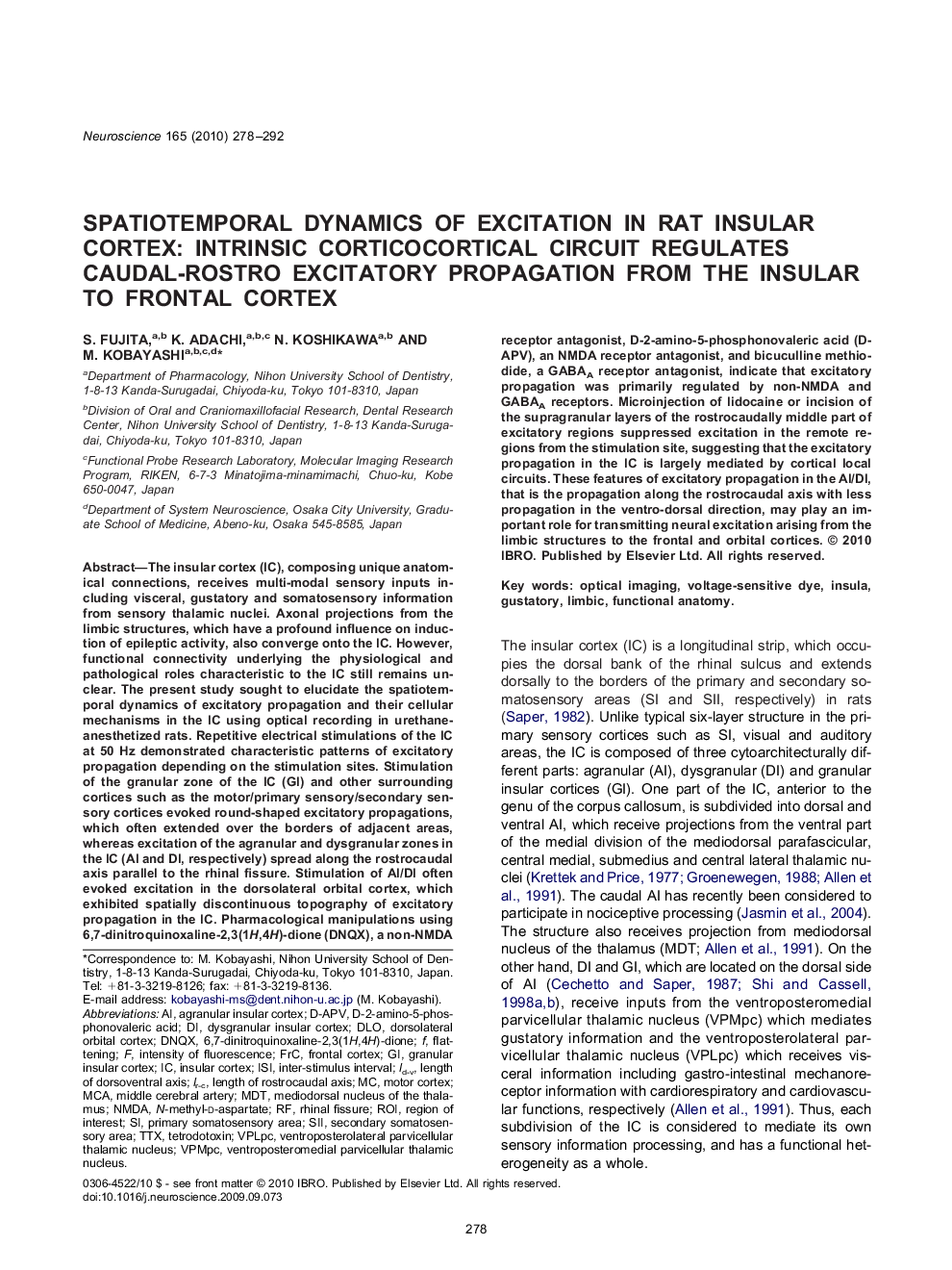| Article ID | Journal | Published Year | Pages | File Type |
|---|---|---|---|---|
| 4339862 | Neuroscience | 2010 | 15 Pages |
The insular cortex (IC), composing unique anatomical connections, receives multi-modal sensory inputs including visceral, gustatory and somatosensory information from sensory thalamic nuclei. Axonal projections from the limbic structures, which have a profound influence on induction of epileptic activity, also converge onto the IC. However, functional connectivity underlying the physiological and pathological roles characteristic to the IC still remains unclear. The present study sought to elucidate the spatiotemporal dynamics of excitatory propagation and their cellular mechanisms in the IC using optical recording in urethane-anesthetized rats. Repetitive electrical stimulations of the IC at 50 Hz demonstrated characteristic patterns of excitatory propagation depending on the stimulation sites. Stimulation of the granular zone of the IC (GI) and other surrounding cortices such as the motor/primary sensory/secondary sensory cortices evoked round-shaped excitatory propagations, which often extended over the borders of adjacent areas, whereas excitation of the agranular and dysgranular zones in the IC (AI and DI, respectively) spread along the rostrocaudal axis parallel to the rhinal fissure. Stimulation of AI/DI often evoked excitation in the dorsolateral orbital cortex, which exhibited spatially discontinuous topography of excitatory propagation in the IC. Pharmacological manipulations using 6,7-dinitroquinoxaline-2,3(1H,4H)-dione (DNQX), a non-NMDA receptor antagonist, D-2-amino-5-phosphonovaleric acid (D-APV), an NMDA receptor antagonist, and bicuculline methiodide, a GABAA receptor antagonist, indicate that excitatory propagation was primarily regulated by non-NMDA and GABAA receptors. Microinjection of lidocaine or incision of the supragranular layers of the rostrocaudally middle part of excitatory regions suppressed excitation in the remote regions from the stimulation site, suggesting that the excitatory propagation in the IC is largely mediated by cortical local circuits. These features of excitatory propagation in the AI/DI, that is the propagation along the rostrocaudal axis with less propagation in the ventro-dorsal direction, may play an important role for transmitting neural excitation arising from the limbic structures to the frontal and orbital cortices.
